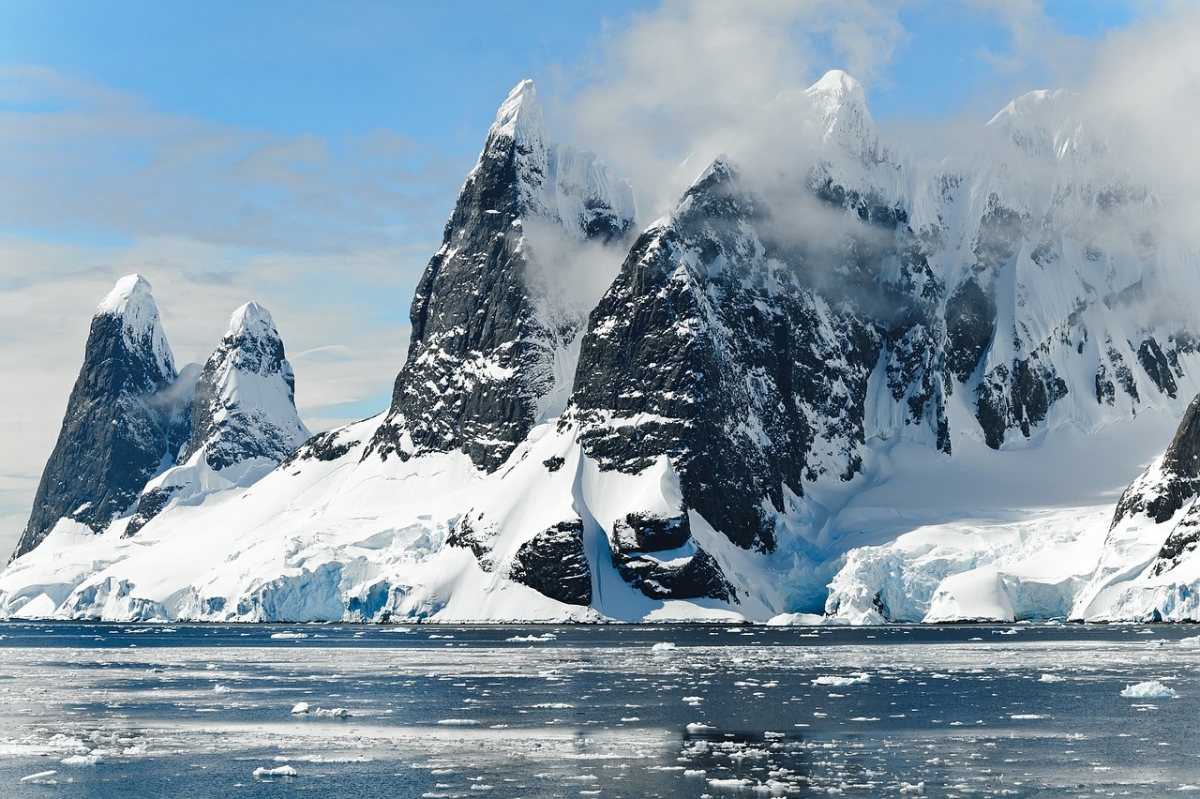As pristine landscapes become a relic of the past, the icy tundras and taigas of the Arctic polar regions are becoming prized destinations for high-end adventure travelers who want to see the region before it’s gone forever. The perverse consequence of this kind of “last-chance” tourism in the Arctic is that, done carelessly, it will almost certainly accelerate the destruction and damage of the precise attractions that it so fetishizes, people and landscapes included.
With the Arctic warming at twice the speed of the rest of the planet, the economic potential that was once guarded behind seemingly impenetrable sea ice is rapidly becoming exposed. Today, cruise ships such as the Crystal Serenity, which completed its second journey through the Northwest Passage last year, are increasingly traversing the Arctic waterways. Though there has been increased attention to developing tourist infrastructure in recent years in Canada and Alaska, which are home to some of the most isolated and difficult to access Arctic regions, many of the communities located on tourist routes still lack the resources, training, and basic infrastructure to handle an influx of tourists. Considering the speed of change in these areas, affected communities are hard-pressed to form effective governance bodies to represent their interests and manage the economic activities occurring on their lands.
 Peoples indigenous to the Arctic are extremely resilient because their livelihoods have developed around a severe and constantly changing environment. A tourist influx will inevitably change local economies, especially for those peoples who previously depended little on external inputs to support them. Because of their dependence on natural resources and specific adaptations to icy and remote conditions, they have also been identified as potentially quite vulnerable to changing conditions in the Arctic. But this vulnerability differs substantially depending on a variety of factors, including governance structures, patterns of subsistence, and social institutions, which vary greatly between communities. Nonetheless, patterns of hunting, harvesting, and fishing—integral to local identities and systems of knowledge transmission—have already been shifting in response to the impacts of climate change, thus altering the landscape against which changes to local social dynamics and economies are occurring.
Peoples indigenous to the Arctic are extremely resilient because their livelihoods have developed around a severe and constantly changing environment. A tourist influx will inevitably change local economies, especially for those peoples who previously depended little on external inputs to support them. Because of their dependence on natural resources and specific adaptations to icy and remote conditions, they have also been identified as potentially quite vulnerable to changing conditions in the Arctic. But this vulnerability differs substantially depending on a variety of factors, including governance structures, patterns of subsistence, and social institutions, which vary greatly between communities. Nonetheless, patterns of hunting, harvesting, and fishing—integral to local identities and systems of knowledge transmission—have already been shifting in response to the impacts of climate change, thus altering the landscape against which changes to local social dynamics and economies are occurring.
While additional sources of income and infrastructure development could certainly have beneficial impacts on a community’s ability to cope with climate-induced stresses, it is critical that they participate actively in managing such developments to ensure that they are not further aggravating the negative impacts of changes on their land or livelihoods. Supporting robust governance structures, consultations, and impact assessments for these communities is a necessity before any planned development, especially when the majority of these communities will be wildly outnumbered by the tourists who plan to visit their communities.
The kind of tourism embodied in the Crystal Serenity cruise does not appear to meet these basic standards of respect for local livelihoods. Despite a high level of investment in structural preparations for the ship, Crystal Cruises was heavily criticized for failing to adequately prepare for the external risks associated with such a trip, notably a crash. While there was substantial coordination to train the communities to handle an emergency situation with passengers, Prof. Michael Byers of the University of British Columbia noted that in the event of a catastrophe in which the entire ship was in need of rescue, including over 1,500 crewmembers and passengers, it would effectively “break” the Canadian search-and-rescue system. Hamlets that could be involved in rescue efforts, some of which do not even have wharfs or docks, are not all equipped to handle this kind of situation. Resource-dependent communities are threatened by large ship traffic in the area, as the inherent risk of spills endanger wildlife and ecosystems on which they depend for survival. Despite these criticisms, it should not be ignored that many such communities are ready to accept some level of risk in exchange for a revenue stream that more directly benefits them than other forms of development, such as resource extraction, that are set to increase as ice melts.
While tourism has been long regarded as a central tenet of many nations’ economic development plans, it is dangerous to view tourism as simply another Arctic development strategy akin to mining or fisheries, as this obscures how the presence and activities of tourists is tied more directly to the livelihoods and daily experience of local peoples. With careful consideration, public involvement, and cooperation, tourism can be harnessed to generate positive outcomes through knowledge-sharing and investments in basic services and conservation, but generating such mutually beneficial outcomes does not seem to be a priority concern of large cruise companies. In a region in which most tourism is almost entirely focused on nature-based activities and cultural touring, it is even more necessary for outside visitors to consider the possible impacts they are having on those destinations they are so interested in seeing. Such careful consideration, however, may sometimes lead you to the conclusion that even your wildest desires can’t justify the harm you’re causing.
